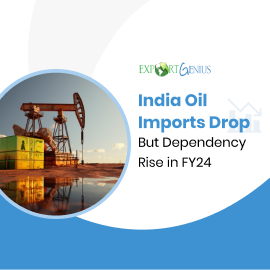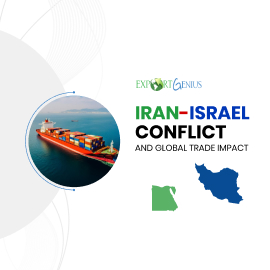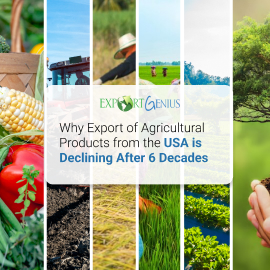Singapore Imports Food Items – How It Deals with Rising Food Inflation
29 June 2022
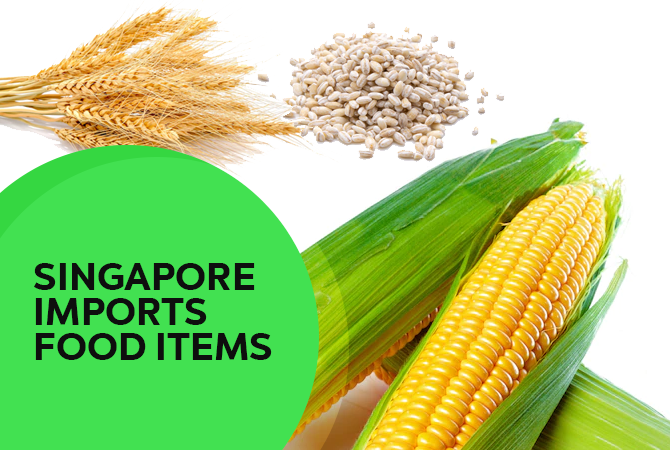
Key Points
·
Singapore
is known for its local cuisines, but it faces a challenge – food security.
·
As a
small island nation, Singapore imports more than 90% of its food items.
·
Food
prices in Singapore rose by 4.1% in April 2022, a year earlier.
Singapore is known for its variety of street food and
local cuisines, however, the country faces a persistent challenge – food
security. The issue was thrust into the national spotlight after recent food
export bans, in particular, the chicken export ban by neighbouring Malaysia,
from which Singapore imports about 30% of its chickens. Rising global food
prices due to the ongoing Russia-Ukraine war is also a major concern for
Singapore as the country imports more than 90% of its food items from more than
170 countries and regions. Food prices in Singapore increased by 4.1% in April
2022 from a year earlier and up from 3.3% recorded in March 2022.
Global Food Crisis and Impact on
Singapore Food Industry
Since Russia’s invasion of Ukraine, the prices of food
items in the global market have risen, resulting in a fear of global food
shortage. Over the past six months, prices of products such as cooking oil,
eggs, and meat in Singapore have gone up between 30% and 45%. According to the
Monetary Authority of Singapore, elevated global food prices are expected to
keep contributing to local food inflation in 2022.
Global food prices had already started to rise during
the Covid-19 pandemic, but the Russia-Ukraine war has worsened those
inflationary pressures. Food shortage is expected to continue this year and may
slit into next year as well. Other countries cannot quickly jump in to fill in
the gap left by Russia and Ukraine because it takes at least one year to grow
fresh produce.
While Singapore is still doing well to maintain food
security, it is importing more food items from other countries to meet the
domestic demand for commodities. Singapore has launched a “30 by 30” initiative
to produce 30% of its nutritional needs by 2030.
Singapore Imports Processed Food
and Agro-based Products from the World by Quarter
Singapore majorly imports animal or vegetable fats
& oils, fats of bovine animals, sheep & goats, and food preparations.
Here’s a list of Singapore’s top 10 food and agro-based products that were
imported from the world in quarters of 2021 and Q1 of 2022.
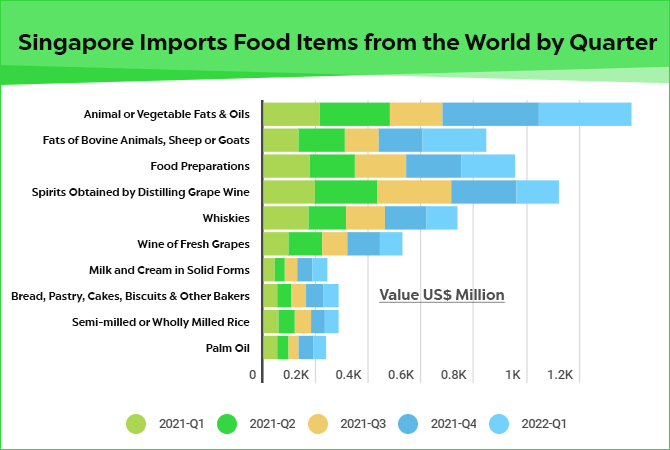
|
Food Item |
2021-Q1 |
2021-Q2 |
2021-Q3 |
2021-Q4 |
2022-Q1 |
|
Animal or Vegetable Fats & Oils |
216 |
265 |
199 |
364 |
352 |
|
Fats of Bovine Animals, Sheep or Goats |
135 |
176 |
126 |
166 |
241 |
|
Food Preparations |
174 |
174 |
191 |
209 |
205 |
|
Spirits Obtained by Distilling Grape Wine |
193 |
240 |
277 |
248 |
164 |
|
Whiskies |
171 |
144 |
147 |
157 |
115 |
|
Wine of Fresh Grapes |
95 |
126 |
99 |
122 |
83 |
|
Milk and Cream in Solid Forms |
43 |
37 |
49 |
56 |
55 |
|
Bread, Pastry, Cakes, Biscuits & Other
Bakers |
54 |
50 |
59 |
67 |
55 |
|
Semi-milled or Wholly Milled Rice |
55 |
64 |
60 |
54 |
52 |
|
Palm Oil |
54 |
39 |
42 |
54 |
49 |
*****Value US$ Million
Russia-Ukraine war will worsen the
global food supply
Russia and Ukraine are the world’s top exporter
countries of wheat, corn, and barley. In 2021, Russia supplied US$7,301 million
worth of wheat, while US$5,854 million worth of wheat was exported from
Ukraine. Now supplies from both the countries have been hit due to Russia’s
invasion of Ukraine. Below given chart shows the dollar amount of Russia and
Ukraine exports of wheat, corn, and barley reported last year.
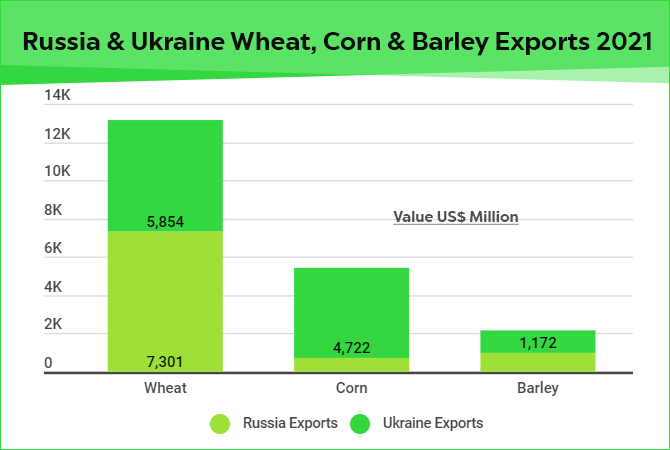
|
Product |
Russia Exports |
Ukraine Exports |
|
Wheat |
7,301 |
5,854 |
|
Corn |
694 |
4,722 |
|
Barley |
966 |
1,172 |
What can Singapore Do?
In the short term, Singapore can provide safety nets
through cash payments or vouchers. However, one of Singapore’s weaknesses is
that even though it tries to diversify its imports from a basket of countries,
it’s still relying heavily on just one or two countries. For example, Singapore
imported more than 40% of its chickens from Brazil and over 30% from Malaysia
in 2021. Most of the chickens imported from Malaysia are live chickens, while the
rest of the chickens imported from Brazil and other countries are frozen.
What exactly Singapore can do is that the government
should encourage more Singapore companies to grow food overseas and form
agreements with other governments to ensure produce isn’t subjected to export
bans. Singapore is a technologically advanced country, it could look into
helping other countries improve their food production systems. That will not
only help Singapore to stabilize its food price and food security but also
global food security and prices as well.



